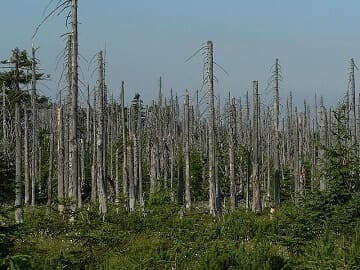Atmospheric pollution
Atmospheric pollution is the presence in the air of materials or forms of energy (radiation, noise, light,...) that in certain quantities imply a risk, damage or serious annoyance for people and other living beings, goods of any nature, as well as that they can attack different materials, reduce visibility or produce unpleasant odours.
Air pollution can be:
- Natural pollution, if it is produced by volcanic eruptions,desert dust, unprovoked forest fires or by the biological action ofliving beings (pollen, methane, etc.). Although it is true that it is pollution because it worsens the quality of the air, it is a pollution that has always existed and that the Earth can accept.
- Anthropic pollution, produced by human activities, such as that produced by the burning of fossil fuels and that emitted by industry. This type of pollution is the most harmful and the one we must try to control. Artificial pollutants can be classified into:
- Physical pollution: electromagnetic radiation, noise, radioactivity, etc.
- Chemical pollution: caused by the burning of fossil fuels, mainly.
Pollution causes damage to plants, animals and human beings, producing bronchitis, breathing difficulties, tiredness, headaches, eye irritation, etc. Also, some pollutants are carcinogenic.
